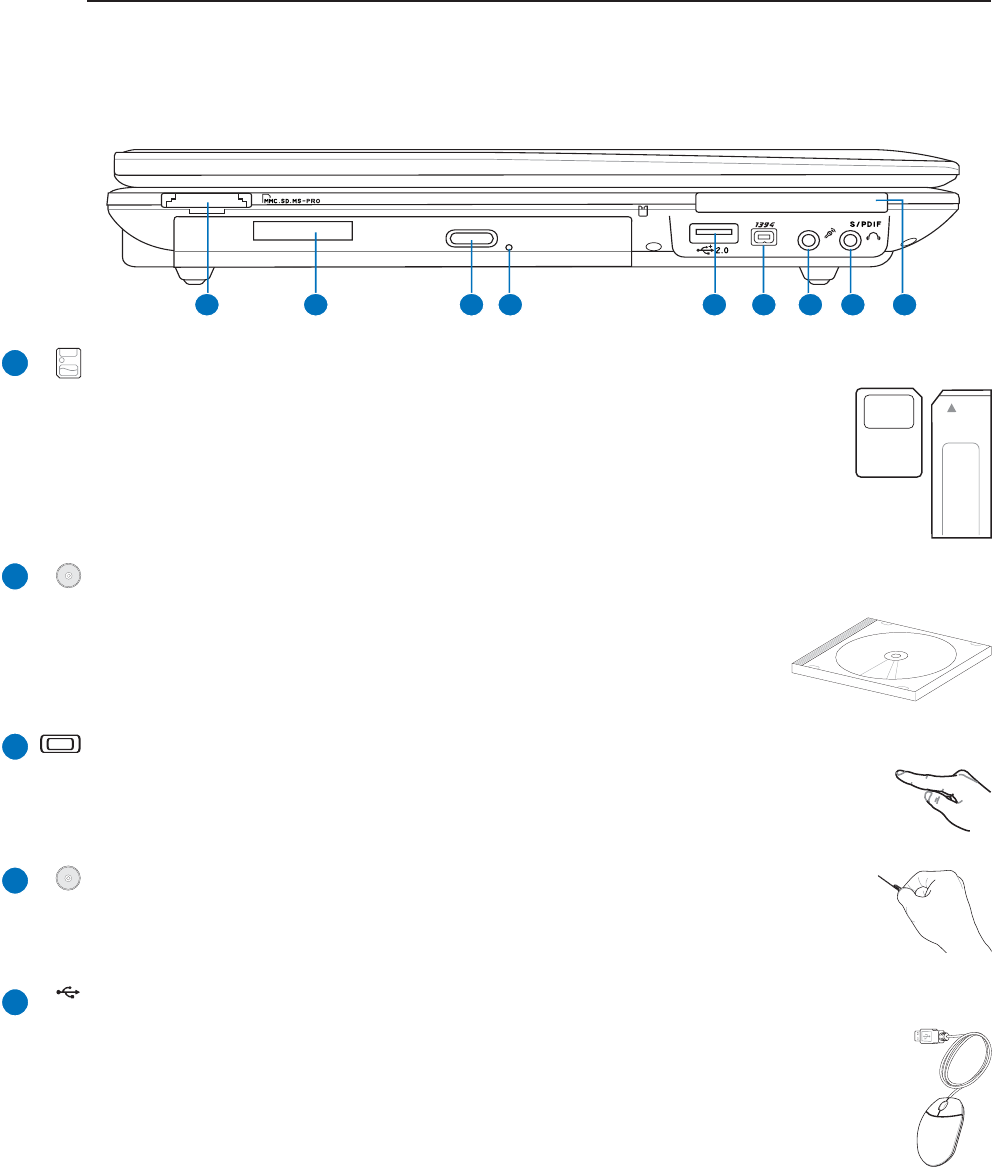
16
2 Knowing the Parts
Left Side
Refer to the diagram below to identify the components on this side of the Notebook PC.
1 2 43 5 76 8 9
Optical Drive
The Notebook PC comes in various models with different optical drives. The
Notebook PC’s optical drive may support compact discs (CD) and/or digital
video discs (DVD) and may have recordable (R) or re-writable (RW)
capabilities. See the marketing specifications for details on each model.
2
3
4
5
1
Optical Drive Electronic Eject
The optical drive eject has an electronic eject button for opening the tray. You can also eject
the optical drive tray through any software player or by right clicking the optical drive in
Windows™ “My Computer.”
Optical Drive Emergency Eject
The emergency eject is used to eject the optical drive tray in case the electronic eject
does not work. Do not use the emergency eject in place of the electronic eject.
2.0
USB Port (2.0/1.1)
The Universal Serial Bus is compatible with USB 2.0 or USB 1.1 devices such as keyboards,
pointing devices, cameras, hard disk drives, printers, and scanners connected in a series up to
12Mbits/sec (USB 1.1) and 480Mbits/sec (USB 2.0). USB allows many devices to run
simultaneously on a single computer, with peripherals such as USB keyboards and some
newer monitors acting as additional plug-in sites or hubs. USB supports hot-swapping of
devices so that most peripherals can be connected or disconnected without restarting the
computer.
Flash Memory Slot
Normally a separate card reader must be purchased separately in order to use memory
cards from devices such as digital cameras, MP3 players, mobile phones, and PDAs.
This Notebook PC has a built-in memory card reader that can read many flash memory
cards as specified later in this manual. The built-in memory card reader is not only
convenient, but also faster than most other forms of memory card readers because it
utilizes the high-bandwidth PCI bus.


















